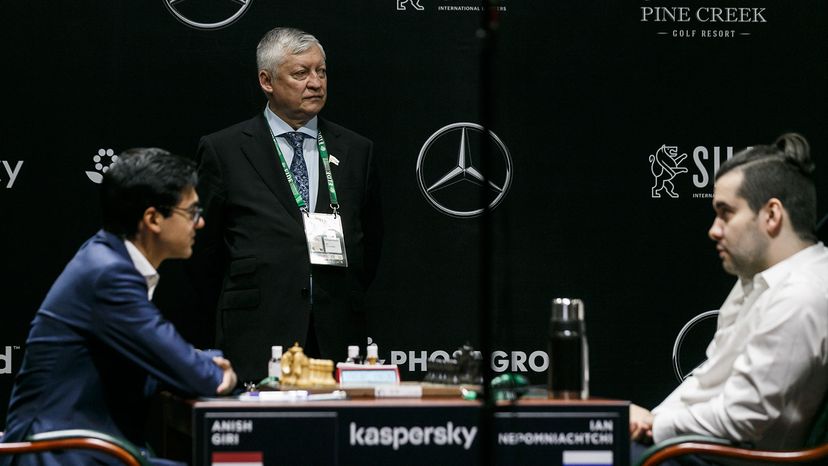How to Play Chess

Chess is a game of strategy for two players. The goal is to attack your opponent's king, and put him in check. This means the king cannot move without being captured.
The rules of game are based on the pieces, half of which are black and half of which are white. True, game manufacturers, who are in the business of fun, create games with non-traditional colors and replace typical game pieces with other characters, but for the purposes of this article, we will use the standard colors.
Advertisement
The chessboard has 64 squares that alternate in color from black (or dark) to white (or light) across eight rows. The horizontal rows are called the ranks and they're identified by numbers (1 to 8) and the vertical rows are the files, identified by letters (A to H). A letter and a number identify each square. The four squares in the center of the board (positions E-4, E-5, D-4, D-5) are the most critical in terms of controlling and winning the game.
Each player starts with 16 game pieces, either all black or all white, including eight pawns, two rooks, two knights, two bishops, a king and a queen. Both players place their game pieces on the board in the same order. The way to insure that the board is facing in the right direction is to remember "white in right," meaning there should be a white square on your extreme right corner.
To make sure you place the pieces in order along the back rank, it's helpful to remember the pieces get taller as you move inwards. Rooks, or the pieces that look like a castle, go in the corners; knights, the pieces that look like horses, occupy the space next to the rooks; and, the two bishops sit on the squares inside of the knights. You have two spaces and two pieces left. Remember, the queen always goes on her own color. A clever way to remember this rule is that a "queen's dress must always match her shoes." Each of the eight squares in the next row or rank holds a pawn.
The goal of chess is to capture your opponent's king, but since actually capturing the king is against the rules of the game, players aim for checkmate. Sound confusing? It is -- at first. Think of the game as a battle. All of your pieces work to capture or remove your opponent's pieces from the board by moving onto the squares they occupy. By capturing his pieces, his king becomes more vulnerable and open to being attacked. Meanwhile, you must also defend your king and save your own pieces from being captured.
This is where strategy comes into play.
When you've got your pieces in a position where your next move would be to capture your opponent's king (if it were allowed), you have him in check. Now your opponent must make a move to save his king or get him out of check. If the king is trapped and has no way to escape, it's called checkmate and you have won.
Each piece is assigned points, and there are rules about how it can move around the board. The point value assigned to each piece is only to show its strength in terms of how it can move. At the end of the game there is no adding up of points based on the pieces you've captured. The winner is declared because he or she has trapped the opponent's king, in other words he has been checkmated.